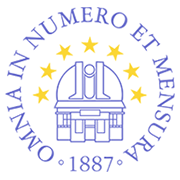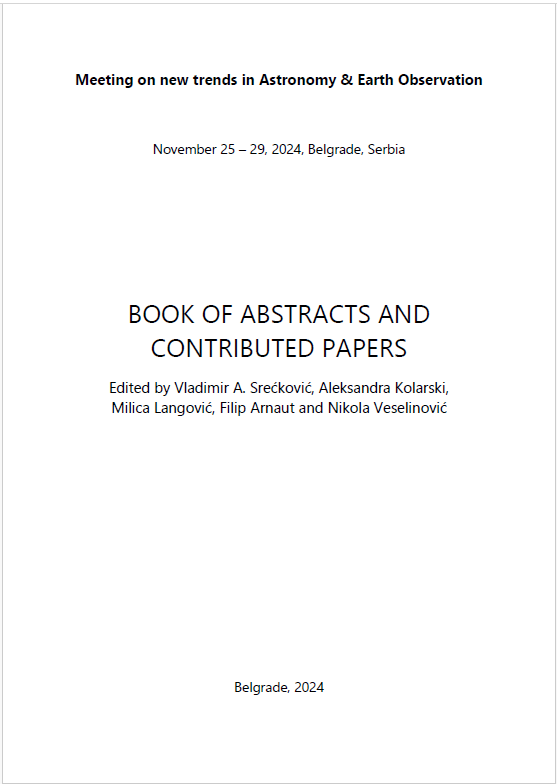ELECTRON-INDUCED EXCITATION AND RECOMBINATION OF BEH+ IONS AND ISOTOPOMERS
Nicolina Pop, Emerance Djuissi, Jeoffrey Bofelli, Janos Zsolt Mezei, Felix Iacob, Sebastien Niyonzima, Detlev Reiter, Kalyan Chakrabarti, Ioan F. Schneider.
Publication
BOOK OF ABSTRACTS AND CONTRIBUTED PAPERS - International scientific conference: Meeting on new trends in Astronomy & Earth Observation, Page 31-32, https://doi.org/10.69646/aob241207
BOOK OF ABSTRACTS AND CONTRIBUTED PAPERS - International scientific conference: Meeting on new trends in Astronomy & Earth Observation, November 25-29, 2024, Belgrade, Serbia, Edited by Vladimir A. Srećković, Aleksandra Kolarski, Milica Langović, Filip Arnaut and Nikola Veselinović
Published by: Scientific Society Isaac Newton Belgrade
Published: 15. 12. 2024.
Abstract
Abstract: Cross sections and Maxwell rate coefficients for reactive collisons between electrons and Beryllium monohydride cations and isotopologues are computing using the Multichannel Quantum Defect Theory (MQDT). The key challenge in the use of beryllium as main chamber material for experimental and commercial fusion devices is to understand, predict and controle the characteristics of the thermonuclear burning plasma. Due to its toxicity, few experimental data are currently available. In order to model anddiagnose the low-temperature edge plasmas, a complete database for electron-impact collision processes is required for molecular species containing beryllium and hydrogen. Significant fractions of the eroded beryllium will be transported towards the divertor and will form compounds with the fuel atoms, molecules and/or molecular ions. For the fusion plasma edge, extensive cross sections and rate coefficients have been produced for BeH+ (Niyonzima et al., 2017), BeD+ (Niyonzima et al., 2018) and BeT+ (Pop et. al., 2021) cations. The isotopic effects demonstrates the quasi-independence of the rate coefficients on the istopologue, if they are represented with respect to the vibrational energy of the target, at a given electron temperature.New computations on extended energy/temperature range, up to 12 eV/30000 K, are ongoing. - FULL TEXT available in PDF.




